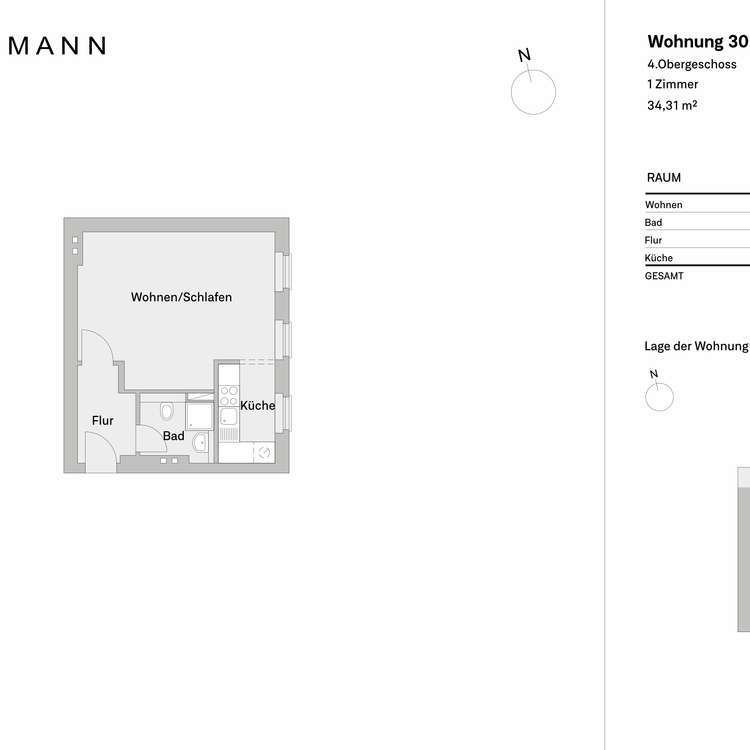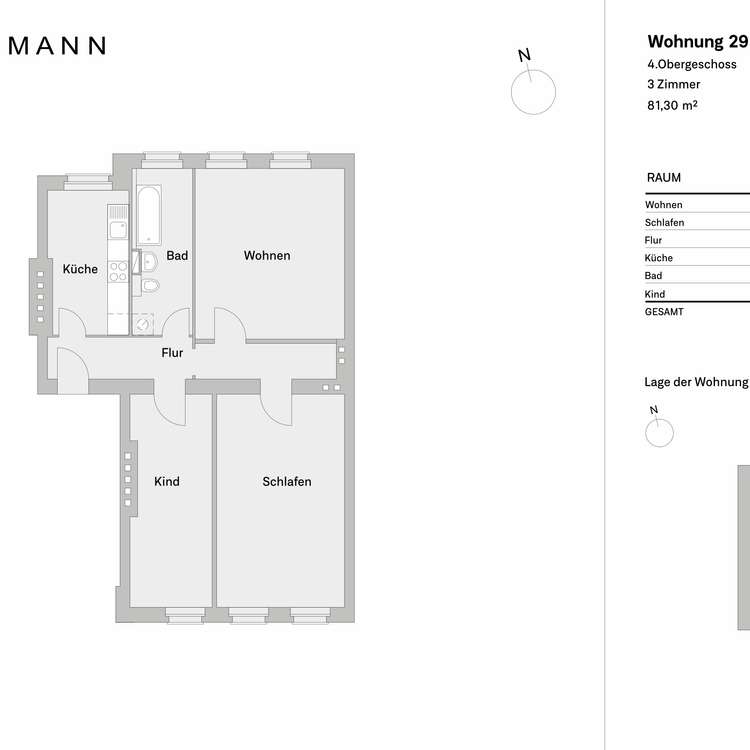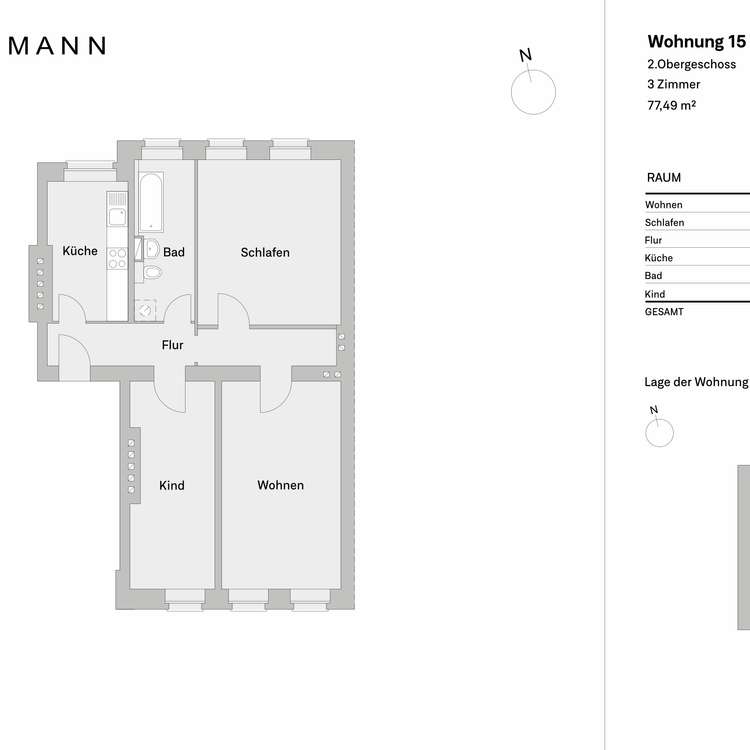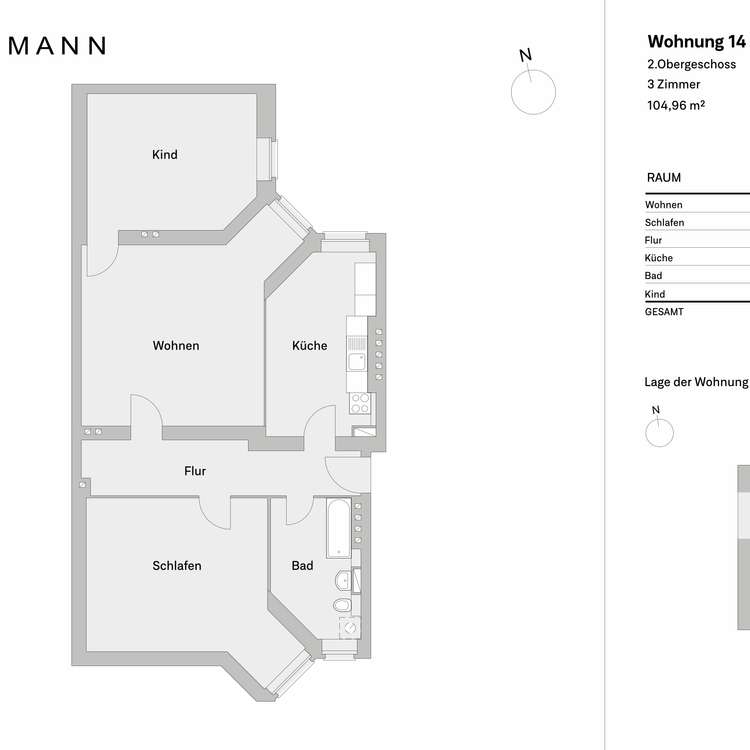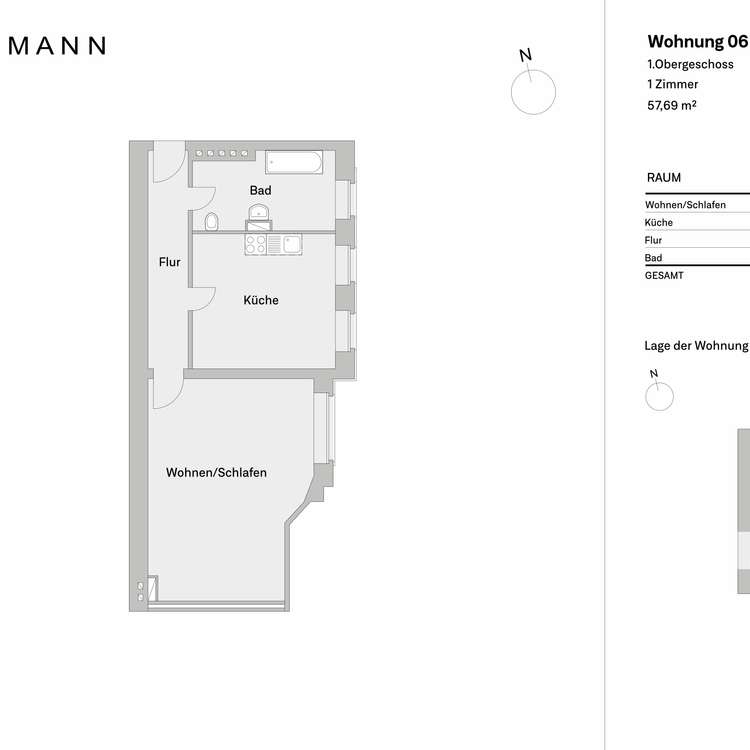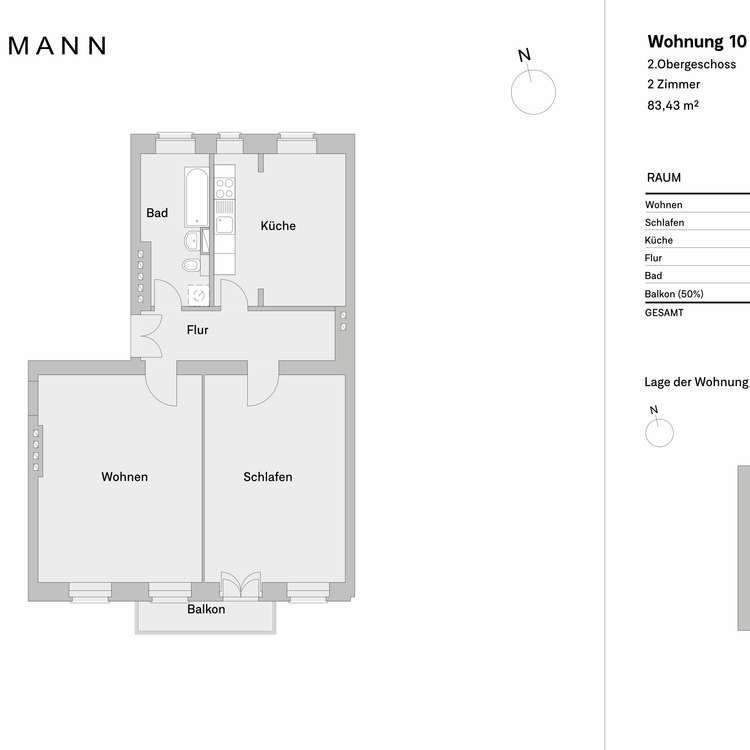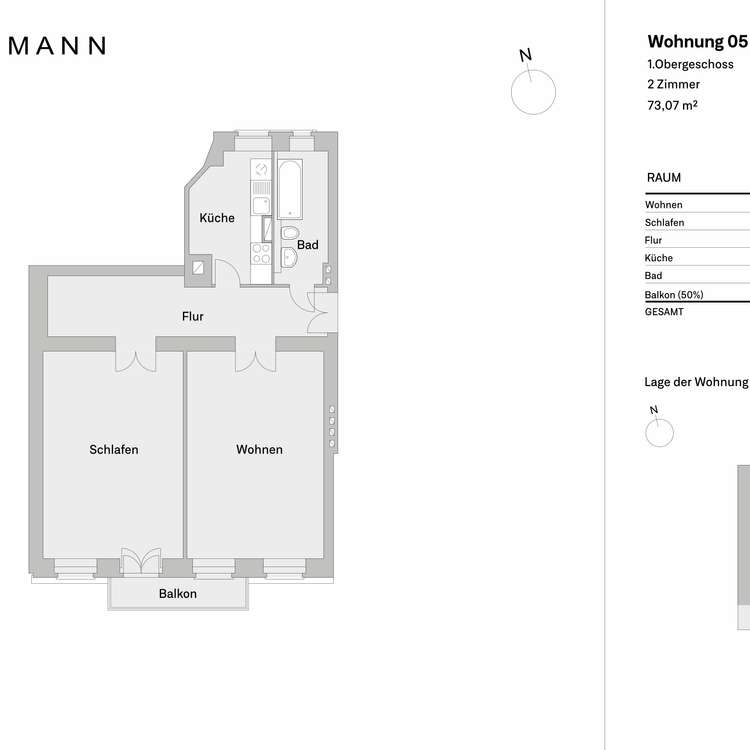Building bridges
Friedrichshain, once a working-class district and heavily hit during the Second World War, has evolved into a pulsating center of Berlin. Here, the past and present, East and West, modernity and tradition meet and merge into a fascinating whole. Friedrichshain has helped to establish Berlin's reputation as a center of the Berlin club scene. Here, the avant-garde of electronic music celebrated its greatest hype.
The architectural landscape of Friedrichshain is as diverse as the people who live here. Old warehouses and cooling houses on the banks of the Spree, Stalinist buildings along Karl-Marx-Allee, and prefabricated buildings shape the image of the district. Friedrichshain consists of vibrant inner-city neighborhoods in all locations and typologies, which are used by the cultural scene, bars, and cafes. The East Side Gallery, a 1.3 km long section of the Berlin Wall, attracts thousands of tourists each year and is a reminder of the time from 1961 to 1989. Street markets, vintage stores, and independent boutiques make the district a popular weekend spot.
Existing buildings
Median Asking price
6,020 EUR/m²
-1.20 %
Median Asking rent
14.00 EUR/m²
+3.90 %
New buildings
Median Asking price
9,110 EUR/m²
-1.30 %
Median Asking rent
26.00 EUR/m²
-5.80 %
Property prices in Friedrichshain
In Friedrichshain, the construction year class 1900 to 1920 dominates the market. The price distinction between existing buildings and new construction is relatively sharp and occurs around 7,500 EUR/m². Interestingly, there are fewer overlaps of new and old buildings than in other districts. The construction year class of 1950 to 1978 plays a subordinate role, as most properties from this time are municipal stocks. In the existing segment, property prices in Friedrichshain have risen by about 112.70 % over the past 10 years. Those who purchased a property in Friedrichshain 10 years ago paid an average of 2,830 EUR/m². The current asking prices for apartment sales in Friedrichshain are around 6,020 EUR/m² for existing apartments and around 9,110 EUR/m² for new apartments.
Price index Friedrichshain
| Period | Existing buildings Median Offer price | Index (base 10 years = 100) | New buildings Median Offer price | Index (base 10 years = 100) |
|---|---|---|---|---|
| Current quarter | 6,020 EUR/m² | - | 9,110 EUR/m² | - |
| 1 Year | 6,090 EUR/m² | -1.20 % | 9,230 EUR/m² | -1.30 % |
| 3 Years | 5,210 EUR/m² | 15.50 % | 8,640 EUR/m² | 5.40 % |
| 5 Years | 4,530 EUR/m² | 32.70 % | 6,290 EUR/m² | 44.80 % |
| 10 Years | 2,830 EUR/m² | 112.70 % | 3,750 EUR/m² | 143.30 % |
Development of property price segments in Berlin Friedrichshain
The number of apartment listings in Friedrichshain is stabilizing. In the 12-month period, about 1,740 existing apartments were listed. The price segment from 5,000 to 7,500 EUR/m² predominates.
In the new construction segment, about 420 units were listed over the 12-month period. The average list price for condominiums in new construction projects in Friedrichshain is around 9,050 EUR/m².
Bird's eye view: Property Prices in Berlin Friedrichshain
The Bubble Chart shows the supply situation of the last 12 months on the property market in Friedrichshain. The colors mark the year of construction classes, the size of the bubbles the quantity of offers, the location in the coordinate system price radius (square meters) and apartment sizes.

Your Berlin Real Estate Agent For Friedrichshain
Trend
The dynamics in Friedrichshain are slightly weakening in 2023 under the influence of interest rates, energy transition, and market weakness. The linear price development gives way to a plateau movement, but at a high level. The demand, particularly for available apartments, is very good; the housing deficit is high in almost all quarters and is largest in the streets around Boxhagener Platz, in the Samaritan quarter, and at Traveplatz. The migration balance is very high, with a plus of 5,300 arrivals (as of 2022). Overall, Friedrichshain is the youngest demographically in the southeast and somewhat older towards the west, in the quarter along Andreasstraße. The district greatly benefits from the influx of young, well-educated buyer groups who contribute to the rising household income in Friedrichshain and promote acceptance for home ownership in the district. In addition to the central quarters sought after by young buyer groups, the locations north of Frankfurter Allee are also developing well. Price exaggerations remain in 2023 or must be corrected into the accepted price range. We see considerable value potential for Friedrichshain in the coming years.
Apartment buildings in Friedrichshain
In Friedrichshain there are approximately 4,400 residential buildings. The first wave of modernization and new construction took place around the turn of the millennium, mostly utilizing IBB (Investment Bank Berlin) funding. This not only saved many nearly uninhabitable rental buildings from demise but also sparked the development of trendy locations and international neighborhoods, especially east of Warschauer Straße and north of Karl-Marx-Allee and Frankfurter Allee.
According to the Berlin Valuation Committee, the current average value for multi-family homes (MFH) in Friedrichshain is around 2,450 EUR/m² of living space. The average multiplier is at 26.7 times the annual net cold rent. We would be pleased to advise you on the strategy, value, and optimization of your MFH in Friedrichshain.
| Jahr Year |
Vorgänge Transactions |
Mittelwert Average |
Vielfaches Multiplier |
|---|---|---|---|
| 2018 | 29 | 3265 | 35,3 |
| 2019 | 37 | 2827 | 36,4 |
| 2020 | 24 | 2685 | 31,1 |
| 2021 | 39 | 3122 | 34,1 |
| 2022 | 20 | 2824 | 36,3 |
| 2023 | 18 | 2448 | 26,7 |
New construction Friedrichshain
In Friedrichshain, the construction activity initially focused on the eastern quarters, where over 2,000 apartments were built over a 10-year period before the cranes turned towards the western and northern areas. The Samariterviertel saw intensive densification, while conversions dominated the area around Boxhagener Platz. Smaller neighborhoods emerged like spots, and the north side of the Spree has developed into a dynamic, inner-city residential and business district in just a few years.
Neighbourhoods in Berlin Friedrichshain
The residential areas in Friedrichshain range from simple locations in the northern Friedrichshain to simple to medium locations in the centre, to good residential areas in the neighborhoods on the Stralau peninsula and in the new city quarters along the Spree. While in the west of Friedrichshain the streets are predominantly shaped by prefabricated buildings, in the east old buildings from the Wilhelminian period prevail. The quarters north and south of the former Stalinist boulevard on Karl-Marx- and Frankfurter Allee are very popular. Most locations in Friedrichshain are characterised by very good transport connections and short distances to neighbouring quarters or central hotspots. The density of restaurants and cafés is high. Very much in demand among international buyers, students and young people are the relevant scene neighborhoods such as Samariter- and Boxhagener-Kiez which is surrounded by the familiar atmosphere of Revaler Straße and the urbanity of Warschauer Straße / Frankfurter Allee. Right next door is the Simon-Dach-Kiez neighborhood with side streets and a high concentration of bars, clubs, pubs and restaurants.
Rental market in Berlin Friedrichshain
The rents in Friedrichshain have increased over the previous year in all residential areas by about 3.90 % to about 14.00 EUR/m². As already in the past years the offered rents in Friedrichshain differentiate also in 2024 increasingly according to microlocation. New contract rents are higher in the neighbourhoods south of Frankfurter Allee. In the northern direction (Landsberger Allee) and in the western direction (Lichtenberg), the rents on offer fall in relation to the privileged locations. In the new construction segment, various new projects are expected to boost rents. Some projects appeal to a predominantly international audience that does not see rental prices in an inner-city context. The average offered rent in the area of new construction is 26.00 EUR/m². There is currently a flatter price increase for both new lettings in existing and new buildings.
Rent index Friedrichshain
| Period | Existing buildings Median Offer price | Index (base 10 years = 100) | New buildings Median Offer price | Index (base 10 years = 100) |
|---|---|---|---|---|
| Current quarter | 14.00 EUR/m² | - | 26.00 EUR/m² | - |
| 1 Year | 13.45 EUR/m² | 3.90 % | 27.60 EUR/m² | -5.80 % |
| 3 Years | 15.55 EUR/m² | -10.10 % | 22.35 EUR/m² | 16.20 % |
| 5 Years | 14.05 EUR/m² | -0.60 % | 17.80 EUR/m² | 46.00 % |
Bird's eye view: Asking rents in Berlin Friedrichshain
The Bubble Chart shows the supply situation of the last 12 months for the property market in Friedrichshain. The colors indicate the year of construction classes, the size of the bubbles the quantity of offers, the location in the coordinate system the price radius (square meters) and apartment sizes.
Development of rental price segments in Berlin Friedrichshain
The chart shows the changes in the price structure of the district based on four price segments. How many flats were offered in the different price segments? The line shows the development of the average asking price per square metre across all apartment types and price segments for unit until year of construction 2016.
Building activity in Friedrichshain
Friedrichshain is an inner city district with a very high density. The housing stock of 75.000 units is spread over 12 statistical planning spaces LOR (Lebensweltlich orientierte Räume). The average apartment size is 68.9 m². Quarters with smaller average apartment sizes can only be found in Mitte and Lichtenberg. The statistical household size in Friedrichshain is 1.60 persons and the calculated household size is 1.80 persons per household.
The building activity in Friedrichshain has been very high since 2014. When and in which quarters (LOR) construction completions were reported, can be seen from the map. (Source: Amt für Statistik Berlin-Brandenburg)
Milieu protection in Friedrichshain
As of May 2021, six milieu protection areas have been established in the district in accordance with §172 Para. 1 Sentence 1 No. 2 BauGB. The areas cover a total area of about 344 hectares, which corresponds to about 35.2% of the total area of Friedrichshain district.
| Milieu protection area | In force since | Area in ha | Extended | Last update |
|---|---|---|---|---|
| Boxhagener Platz | 1999 | 148,0 | 2021 | 2020 |
| Petersburger Strasse | 2013 | 86.4 | - | 2016 |
| Weberwiese | 2016 | 26.0 | - | - |
| Stralauer Kiez | 2019 | 29,0 | - | - |
| Samariterviertel | 2021 | 54,4 | - | - |
In Friedrichshain, another study area is under consideration. It can be assumed that it will be designated.
- Warschauer Strasse (former redevelopment area)
Milieu protection map Friedrichshain
Check in our milieu protection map Berlin whether your property is located in a protection area, an investigation area or a suspected area. Our milieu protection map is continuously revised and updated on basis of the resolutions of the district assemblies (BVV). Please also visit our milieu protection area for further information.
General background in Friedrichshain
Friedrichshain merged with Kreuzberg as part of the 2001 district reform. The position of district mayor is provided by Bündnis 90/ Die Grünen, as well as the resort for construction, planning and facility management. The district's housing policy is increasingly turning against the free market and is making headlines, among other things, through the effective exercise of pre-emptive rights. Projects have a difficult time in Friedrichshain-Kreuzberg. The processing times are long. Since 2015, the focus of the district has been less on the creation of new housing and more on the purchase of additional stock through pre-emptive purchases.
Structurally Friedrichshain is very heterogeneous. In addition to the large buildings on Frankfurter Allee and prefabricated building sites, well-preserved old building quarters with new construction projects woven into them, e.g. south and north of Frankfurter Allee, predominate. The district is one of the largest supply markets in Berlin. This is partly due to a higher fluctuation of young residents (57% between 18 and 45 years) and partly to larger new construction projects in recent years. Part of the demand overhang is absorbed by increasing household sizes.
Population in Friedrichshain
Migration in Friedrichshain
Friedrichshain is an increasingly international district. For the fifth year in succession, population growth is fed mainly by international inflows. It can be seen that for years the district has been losing population to other Berlin districts, while internationally and nationally strong population gains have been recorded. As the statistics show, Friedrichshain is very popular among Western European states and the USA.
- All migrations
- International
- National
- Suburban
- Binnen
- Hotspot
District Reports Berlin
This report was last updated on 23.07.2024 .
Disclaimer
The Guthmann Market Report is a semi-automated report about the property market in Berlin. All information has been carefully researched and is given to the best of our knowledge and belief. We assume no liability for completeness, deviations, changes and errors. Our report does not represent an investment recommendation.
Sources
Amt für Statistik Berlin-Brandenburg: Einwohnerregisterstatistik (Bewegungsdaten), Fortschreibung des Wohngebäude- und Wohnungsbestandes, Ergebnisse des Haushaltegenerierungsverfahren KOSIS-HHGen, Baufertigstellungen. IMV GmbH: Rohdaten Preise und Mieten. Senatsverwaltung für Stadtentwicklung und Wohnen: Umwandlungsdaten (2018), Geoportal Berlin (FIS-Broker). Immobilienverband Deutschland IVD (2018/2019): Immobilienpreisservice 2018/2019.
Methodology
Housing deficit (Treemap): The Statistics Office updates the household data based on the 2011 micro-census. Determination of household count and statistical household size via household generation procedures (KOSIS). We calculate the real household size / housing deficits via the ratio number of inhabitants to number of apartments.
Purchase prices and rents (charts and reports): Calculation of the median on the basis of raw data, own visualization.
Migrations: Aggregation and visualization based on transaction data.
schliessen

